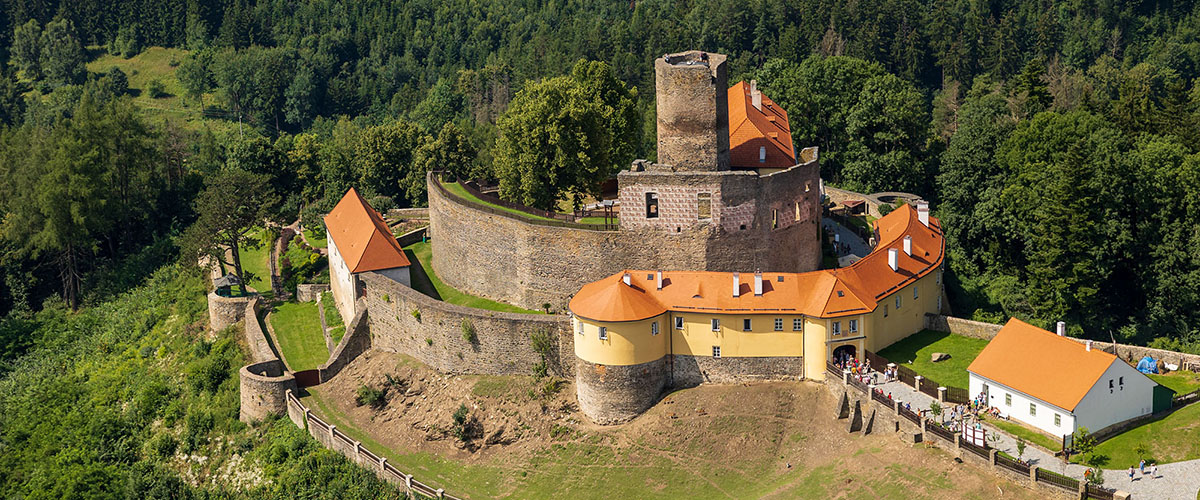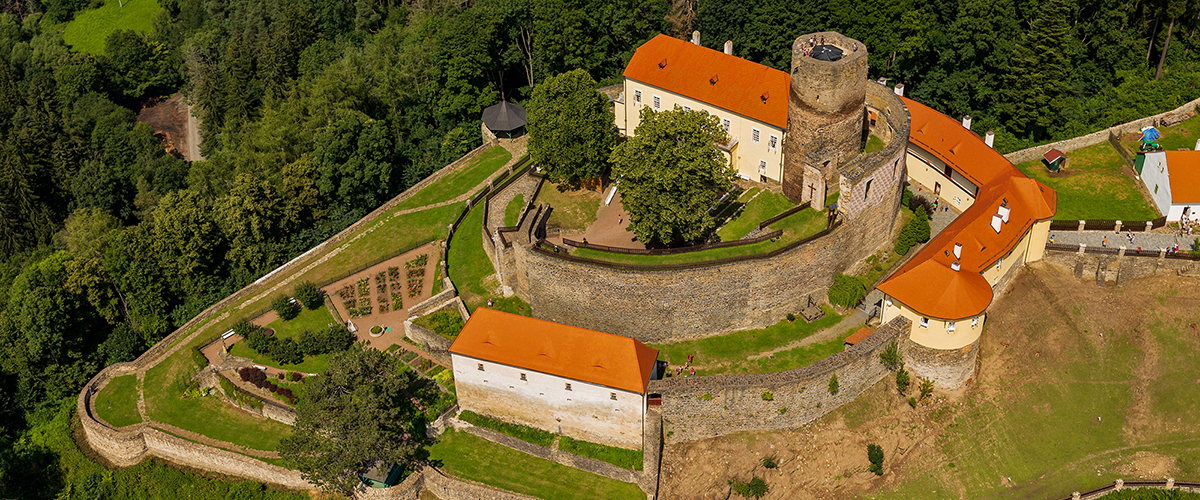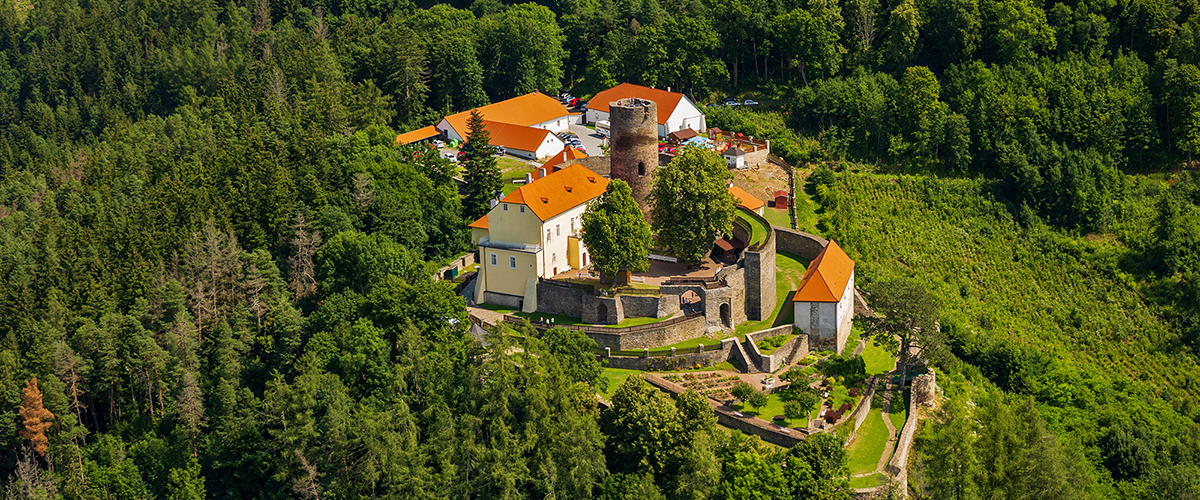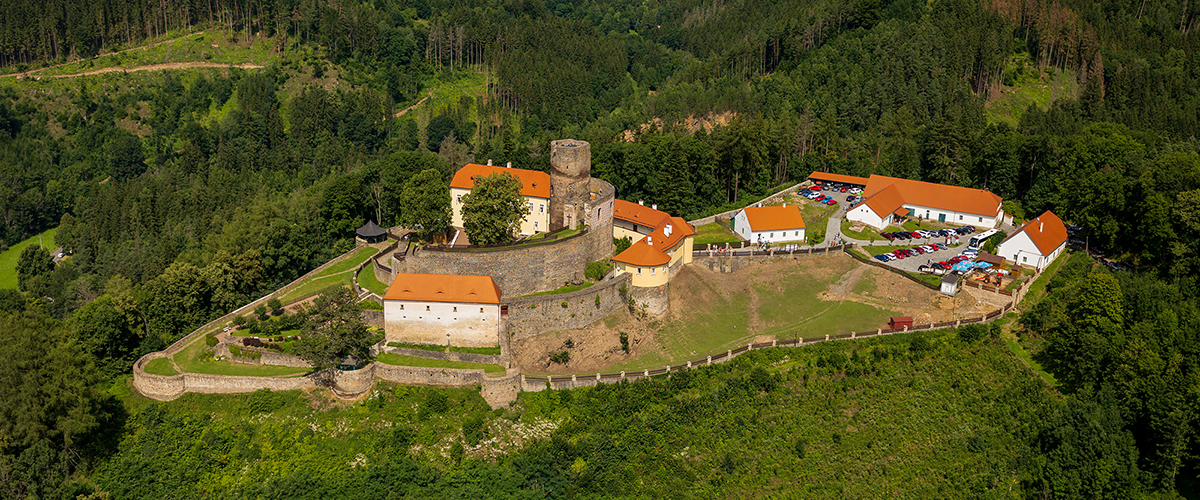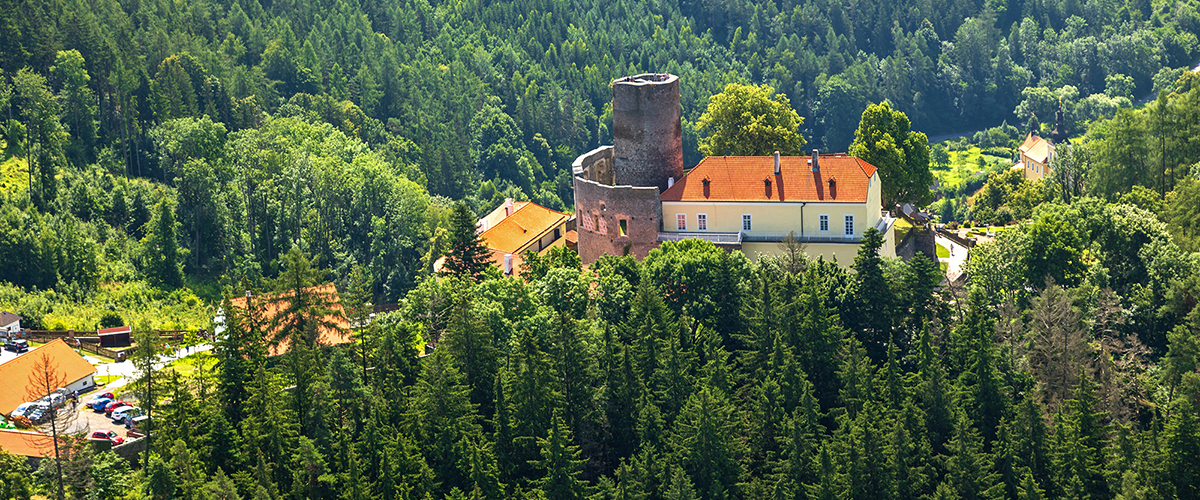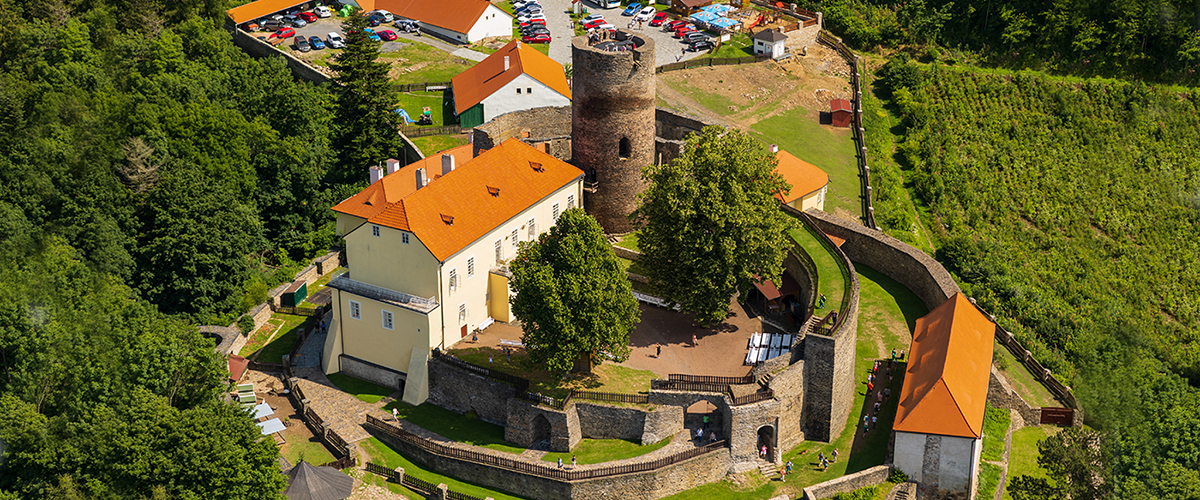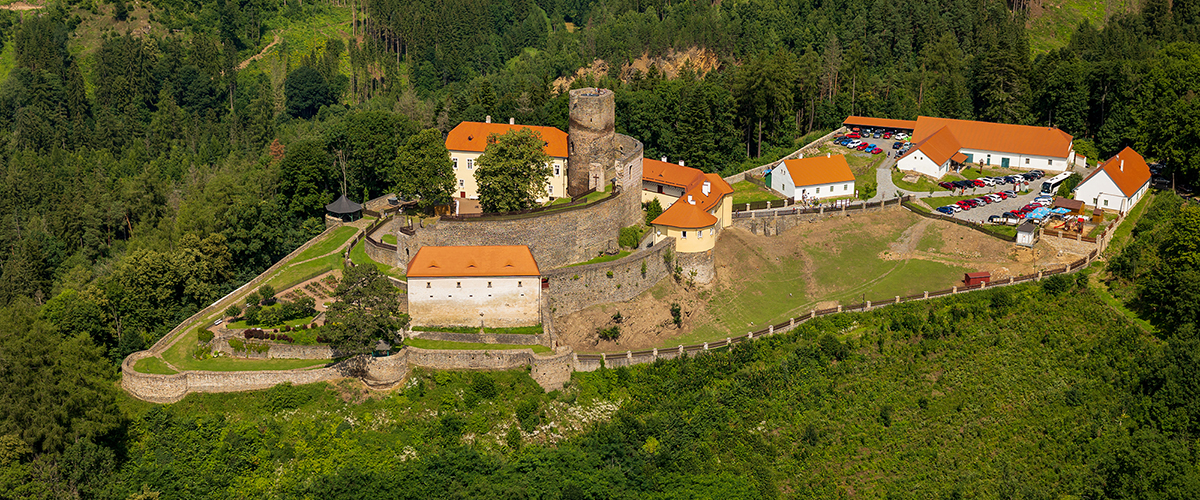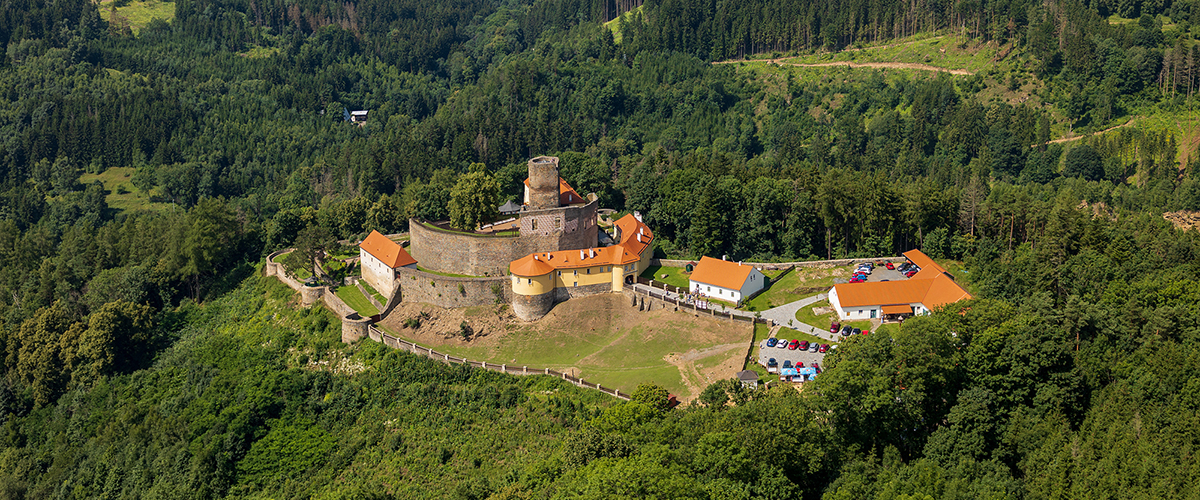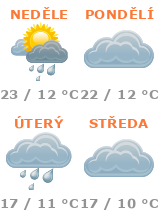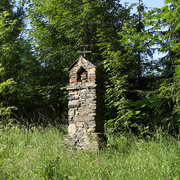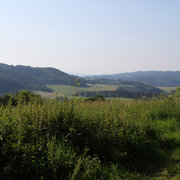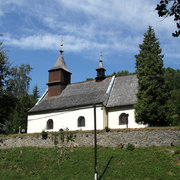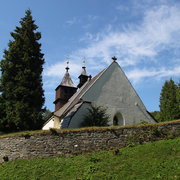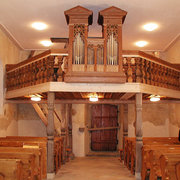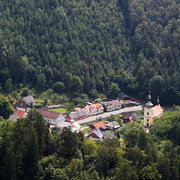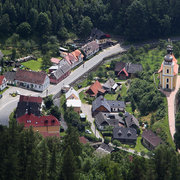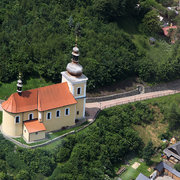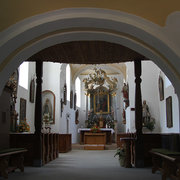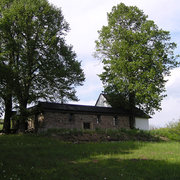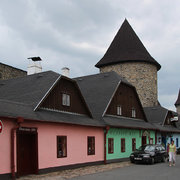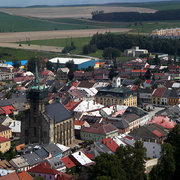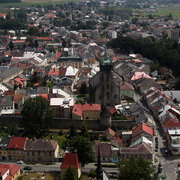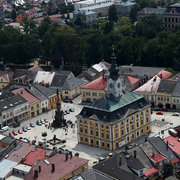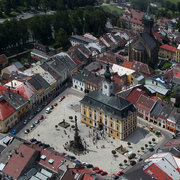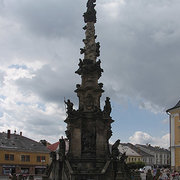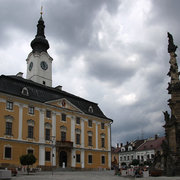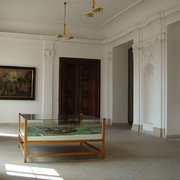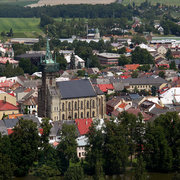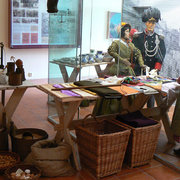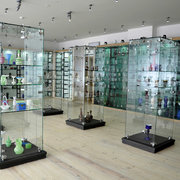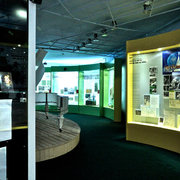Tips for Trips
The picturesque natural environment surrounding the Svojanov Castle invites for walks and hikes. It is a pleasant walk on the hillside of hill Pupek to a wayside cross above the settlement Korýtka. This charming place is surrounded by numerous legends. There is a beautiful view of the landscape, to this day, almost untouched by modern human civilization.
Further away from the wayside croos you can continue to the villade Starý Svojanov, where church of St. Nicholas is. It was built in the early 14th century in Gothic style. During the years 1680 - 1682 it was rebuild in Baroque style. A gate and ossuary was built also at that time. In 1826 a new bell tower was built.In 1924 an extensive collection of Gothic frescos on the walls was discovered during routine maintenance. The paintings are located on the sides of the church, on the windows desktop and in the presbytery of the church. The paintings were restored by academic painter Max Duchek. Extensive renovation of the building, inner paintings and inventory took place in years 1999 – 2003. Twenty three donors and sponsors financially contributed to the reconstruction. There is a crypt, where members of the genus Zaruba of Hustiřany were buried, in the middle of the church. Thanks to its decorations, Church of St. Nicholas in the Starý Svojanov significantly exceeds the level of local buildings.
Market town Svojanov itself is located in a deep valley of the river Křetínka below the castle. Its history is closely connected with the history of the castle. Since 1538 the township has its emblem, at the year 1786 was built church of St. Peter and Paul and one of the first schools and City Hall were built. The original architecture with a number of wooden buildings is preserved to this day.
Baroque church of St. Peter and Paul was built in 1788 and it still maintains its original outside form. Furnishings of the church is predominantly from the early 19th century, the main altar is made in Empire style. The church was solemnly consecrated after a long and expensive reconstruction at 13th of May, 2007. Near is a hiking trail that offers gorgeous views of the town and the castle.
Above the village Předměstí is chapel of St. Máří Magdalena, known as "Majdalenka." Chapel today consists of the chancel of ruined church. According to lore, it is perhaps a remnant of the monastery, which was destroyed during the Hussite wars. Later, hermits took refuge there and cared about the the church and the water well with healing spring under the church and a nearby spa. In 1653 the church was repaired for the last time. In the 18th century it was abandoned and hermitage and spa ceased to exist. In 1827, however, a new roof was laid on a former presbytery of the church and by that present chapel come into being. Other repair of roofs and coverings, ensure of walls and reconstruction in the former presbytery took place in 1935. Around 2000, the roof and walls were repaired again, and in 2006 the church walls were provided with shingled roofs and a small hermitage was built inside the building.
Town Polička
Royal dowry town Polička a royal dowry castle Svojanov are linked together from the foundation to the present. The city was founded by Czech king Přemysl Otakar II in the area called "na políčkách" in 1265. It was one of the support points of the kingdom. In middle of the 14th century the town was paved and the Gothic town hall was built in the middle of the square. Original wooden or half-timbered houses around the square were gradually rebuilt in stone one. At this time, the city fortification was also built, consisting of town walls, water moats and mounds, bastions and four city gates. In the 16th century the gates were fortified with new barbakans. The main wall has been preserved in the whole length of 1220 meters, with all its 19 towers and is therefore one the best preserved city fortification systems in Central Europe. Polička's fortification was very effective at the time of its formation. Just its existence often dissuaded an enemies. Walls also proved themselves in battle several times. However their effectiveness decreased over time with the development of military technology. Nowadays, some reconstructed parts of the main wall with several towers are accessible to the public.
In the second half of the 16th century, Renaissance reconstruction of the entire town was made, from which only church of St. Michal has been preserved. In 1613, the town was almost destroyed by a fire and then the hardships of the Thirty Years War followed. The golden age of Polička's burghers was in 18th century. At that time, a Marian column and urban fountains with a statues of George Pacák was created on the square. In the years 1739 – 1744, a new baroque town hall designed by architect František Maxmilián Kafka was built on the site of the old one. Today it houses collections of old and modern art, including with portrait gallery of family of Hohenems from the chateau in Bystré. Part of the town hall is baroque chapel of St. František Xaverský, that pervades two floors. From 2009, the town hall, Marian column and urban fountains are proclaimed as national cultural heritage.
One of the most distinctive landmark of the town is the church of St. Jacob. It was built in years 1853 – 1865. In 1845, a great fire destroyed the original church and it had to be demolished in large part. At the top of the tower of the new church, a room of watchman was built, who sound the alarm in case of a fire. In 1889, Ferdinand Martinů became this wathman and he moved into the tower with his family. In December 1890, the world-renowned music composer Bohuslav Martinů was born here. Martinů family lived in the tower until 1902. Currently, the room reminds us time, when Bohuslav Martinů was born there. The church of St. Jacob was also proclaimed as national cultural heritage in 2010.
Bohuslav Martinů Centre is located in building of the Municipal Museum on the corner of Tyl and Šaff street. It was opened after an extensive renovation in 2009. New exhibition seeks to show an ancient times of our ancestors in a fun way. Exposure called History of the town Polička and surroundings introduces history of royal dowry town from its foundation to the present in engaging way. Adults and especially children can try to build the town, put on part of armor or to hold a sword. Exposure called Glassmaking at Horácko area represents a production of the majority of glass works from the 19th century. You can also see a school class from the end of 19th century with a period furniture, that reminds the time, when small Bohuslav Martinů started going to the school. Interactive and original exposition called Colorful World of Bohuslav Martinů introduces the unique personality of this famous composer through a visually attractive video material, personal objects and documents from the family Martinů, some of which are accessible to the public for the first time. Let yourself be drawn into the story about the fascinating life story of Polička's native, one of the most important composers of the 20th century, who made famous Czech music around the world!
